The Magical Castle: Bailey (Part 1), 6th November 2022
The mystery of magical reality will defend itself, being only appropriate to be apprehended by an initiate. So people do magical practice and they have magical experiences, and believe themselves engaging with that mystery, but what happens is they never cross the threshold to encounter the mystery - and in some sense get spat out.
And often you can speak to people who do magical work and they will still be talking about things that they encountered during a magical working - a week or two down the line. Except now they'll have followed some kind of esoteric thread, usually based on synchronicities, that has no bearing whatsoever on the working itself.
And then along comes the next working. And then usually this is informed by the sense of seeing what will happen. You might decide you're going to do a magical working with a specific intent, and maybe you do that working, and the specific intent does materialise as a magical result. But the context for that is seeing whether or not it works. And an element of having a magical result is having your mind blown that it actually happens. Synchronicities are always astonishing.
Now, people can have magical careers that span their entire lives where this is what they do on repeat. They'll do a magical working, they'll have the magical results. They'll contact something, it'll blow their minds that they're having the experience. They'll have all of these symbols and strange events happen, and they'll follow these threads. And at some point they'll end up doing another working.
But if you ever ask them the question, did you ever get to the bottom of the magical working that you did last week? Do you understand what it all means? Have you seen yet that magic works? Do you know what magic is? There's usually no answer.
There is a threshold - a magical threshold - in some senses that acts like a mirror. And if your intention or your orientation to the mystery is upside down or the wrong way around, then you'll be given the delusion that you're engaging with magic whilst moving away from it as far as possible.
The Magical Castle
A Motte and Bailey: it's an early European layout for a castle, where you have an area that's nice to live in - so you'll have your food and your library and your church and your meeting hall - somewhere where you can actually live. But a little village with a wall around it is more difficult to defend. Nice place to live, but difficult to defend. And that's the Bailey.
The Motte is a tower, usually built on a hill, and there will be a moat separating the Motte from the Bailey. So usually there's only one way to get to the tower. Now the tower is very easy to defend, but a horrible place to live. You won't want to be inside there. It's cold, it's dark, and it's damp.
Whoever is in charge of the castle dictates the law of the land, which extends as far as the horses can ride from that armed encampment, which is the Castrum, or is the castle.
So the mystery of magic can be thought of as something that we approach that dictates the law of reality and the way that reality is. And it's something we would like to possess for ourselves, and in some sense a magical working is assailing that castle, right? Because we would like to possess it. We would like to have it for ourselves. We would like to use magic to determine the law of the land.
So the easiest place to take is the Bailey. And usually what would happen is the lord that would be in charge of the land - or the king - would retreat to the Motte, into the tower, right?
So it's possible for the enemy to take the Bailey, but not the tower. But then eventually the people in the Bailey will end up leaving because they haven't possessed the castle, they haven't become the king.
When we set up a magical space, the first move is to do a banishing ritual. The banishing ritual is like taking the Bailey, it's taking for ourselves the space that we find ourselves in and arranging it in a manner most conducive to us assailing the tower.
But once a magical space is set up, it's possible that the tower's never taken.
It's possible that people can get comfortable in that space and live there - they put on the clothes that they find, they eat the occult food and there's a nice library. They go in the library and they read the occult texts and they're comfortable and they think the books belong to them. Maybe they even turn it into a fancy printing house, where they make really expensive polished turds as a boutique printer that costs like 500 pounds or whatever for a grimoire full of demons that someone's just made up.
And then maybe what happens is, over time, people start to forget that the towers even there. Some people find plans to the tower and they see that these people that built the tower in the past, they're probably horrible racist white supremacists. So you should give up on any idea of the tower. And in fact, some people say the tower’s never existed in the first place. It was just a myth.
Unfortunately for all the people in the Bailey, the tower looms. The tower looms in the background, and there's a fear about the tower because everyone knows that the tower is still possessed by the enemy. The tower is still possessed by the other, something that has dominance in that area, and it hasn't been taken.
So they put the clothes on, they read the books, they eat the food and have their little parties. But have they taken the castle? Is it theirs?
And who is in that tower? Who is in that tower? And who does it belong to?
What usually happens at the end of a magical working is that with all the appearance of having taken the castle, they end up leaving - never having the authority of the king that lives in the tower.
Mysteriously, there are people that you will meet. There are people that you will meet in the Bailey, who claim to have been to the tower. But everyone boos them and tells them to go away.
I'm not going to say anymore because the rest of it is about the tower.
The Magical System of Austin Osman Spare
So it would be nice to do something practical that will give you experience of what it is that I'm talking about when it comes to the Bailey.
But we can do that without having to go the full extent with practical magical ritual, meaning putting on robes, making wands from a hazel tree in a beam from the moon at a certain astrological time, and so on and so forth. And a nice introduction, a nice way to ease ourself in, to the experience of practical magic is the magical system of Austin Osman Spare.
Austin Osman Spare, in 1907, joined Aleister Crowley's Magical organisation, the Arcanum Arcanorum, the AA. He didn't last very long because he didn't get on well with organisation. Or he didn't really understand how the organization worked.
His reading was very much the standard stuff that you find from that era. He read a lot of blavatsky, he was very familiar with Theosophy. He read all of the early stuff by people like William James and Myers.
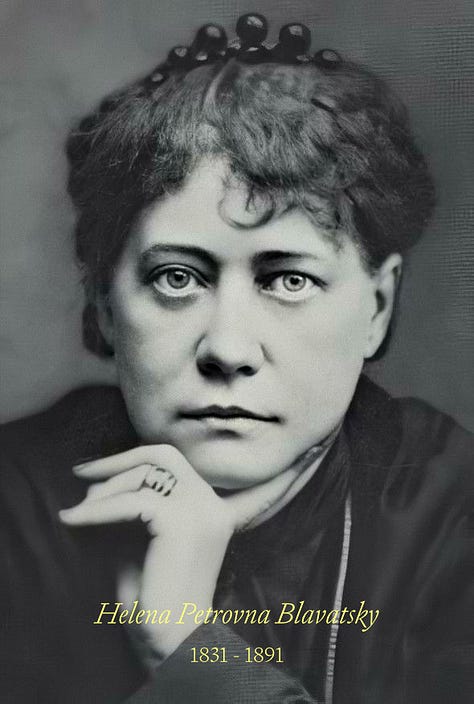
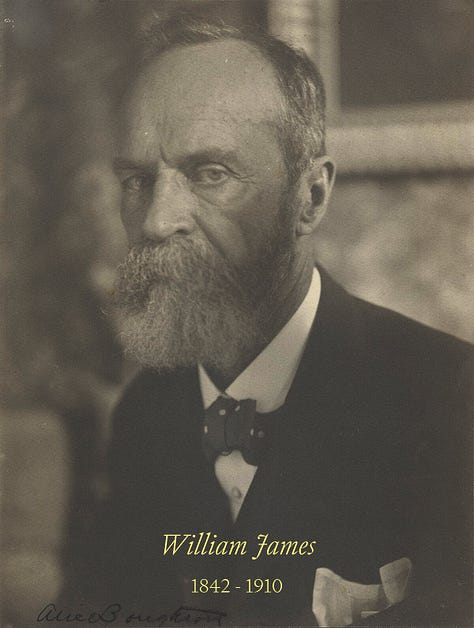
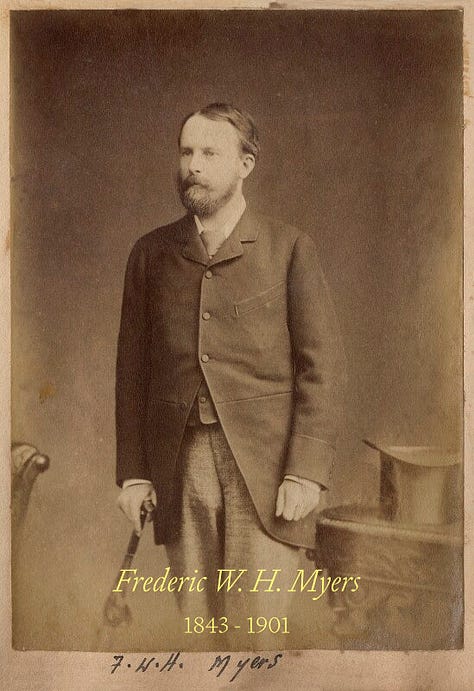
These were people who studied the mediums and hysterics and came to the conclusion that in their trance states - as mediocre as the results might have been - they were engaging with something called the subconscious.
This is the idea that Spare ran with, and it's different from the idea we find with Freud.
The idea of the subconscious
Freud's opinion was the unconscious (rather than the subconscious) was full of repressed sexual desire and isn't something you should consciously engage with - given that it opens you up to letting in ‘the mud of occultism’ or something like that.
So Freud was fully aware of what was going on at the time with mediums and that kind of a thing and was averse to occultism. Austin Osman spare was moving in a different direction.
And based on this understanding of mediums, plus what he learned whilst being initiated in the Arcanum Arcanorum, led him to develop the content of his magnum opus, The Book of Pleasure.
And that included a couple of key ideas. One of them's called the death posture. Another one is the use of sigils.
Austin Osman Spare’s death posture was his way of practicing a method that would lead to the realisation of non-duality. His text is full of references to duality and going beyond that duality. He talked about the ‘neither-neither principle’.
Creative Lying
The problem with Spare is what he would later term his method of creative lying.
Creative lying, right? That doesn't mean reclining in an entertaining fashion. His creative lying was him lying about things for creative purposes. Which is why I think he got on so well with Kenneth Grant. Another liar. For creative reasons.
Spares whole thesis was that we would need to take what our belief might be, right? And that can include intention in terms of something that you want to happen - magical intention, in practical terms. We want to find a way of getting it past the conscious mind so that it'll go into the subconscious.
Now, the subconscious from a William James perspective is ‘the great storehouse of memory’. That's how Spare would put it, right?
So if a medium was recounting journeys to the planet Mars and even displaying a well cultivated capacity for speaking the Martian language, the idea is that all of that comes out of the subconscious because the subconscious contains everything. If you wish to have the strength of a tiger, which is one of the examples that Austin Osman Spare uses in his book as a possible desire that you might have, you'd be able to retrieve that from the subconscious because it contains everything, including the strength of a tiger.
Spare’s whole ethos, if you like, was to take what is conscious and then create a means for transferring it into the subconscious.
Now, there's another way of thinking about that. We can put it in some other terms, and it might be this:
you take the truth and you bury it under creative lying.
From clarity to obscuration
There's a movement. From what's conscious, and then you're making it subconscious. This is the direction. So we move from clarity to obfuscation.
If you try and read any of Spare’s writing, you'll be extraordinarily frustrated. There is the sense that the writer is intentionally being obscure. This is probably the reason why most of the readings of Austin Osman Spare in his methods end up having no real relationship to what's described in the text.
The Death Posture
Here's his description of the death posture. Now the death posture is the way for him - is the way for you - to realise what he called the the Kia, which was his essential principle, or that which is neither-neither, right? Which is synonymous with it. We might say it's a non-dual principle, it's the ultimate principle out of which everything else unfolds.
The aim is for you to realise that nature, which he also called Self-love with a capital S. Again, all of this from Theosophy or from yoga, right?
But this was the practice, this is his description:
Lying on your back lazily, the body expressing the emotion of yawning, suspiring while conceiving by smiling, that is the idea of the posture. Forgetting time with those things which were essential reflecting their meaninglessness, the moment is beyond time and its virtue has happened.
- pg. 18, The Book of Pleasure
What does all of that mean? It means you lie down and don't worry about anything. That's all that means, right?
Standing on tiptoe with the arms rigid, bound behind by the hands, clasped and straining the utmost, the neck stretched, breathing deeply and spasmodically till giddy and sensation comes in gusts, gives exhaustion and the capacity for the former. - pg. 18, ibid.
So now in the second paragraph he’s introduced something. If you stand on tiptoe, strain your body, breathe deep and spasmodically until you're giddy and sensation comes in gusts - that will set you up for that first part, where you just lie down and don't worry about anything.
Third paragraph:
Gazing at your reflection till it is blurred and you know not the gazer, close your eyes - this usually happens involuntarily - and visualise. The light, always an x in curious evolutions, that is seen should be held onto, never letting go until the effort is forgotten. This gives a feeling of immensity, whose limit you cannot reach. This should be practiced before experiencing the foregoing. The emotion that is felt is the knowledge which tells you why. - pg. 18, ibid.
Okay. Three paragraphs there. This is the order of things: concentration. Once you've done that, you practice that a number of times, right? Then it moves on to lying down. But if you want to be nice and relaxed, you can be all tense beforehand, and then you can be nice and relaxed. That's the death posture.
And then you practice that and that will eventually lead to you experiencing the neither-neither principle, right? Or what we're calling Kia -that was a word he came up with to describe this supreme principle.
All of this is taken from standard literature that would've been around at the time, certainly stuff he saw in the A∴A∴ with Crowley. The death posture itself is the corpse pose from yoga. Realising the Self with a capital S, this is also from yoga. The gazing at your reflection is a variation of kasina practice.
Kasina practice as traditionally taught is actually easier to get to grips with than staring at your eyes in the mirror. Now, you could do that and stare at your eyes in the mirror, but I'll tell you the Kasina practice.
So this is a traditional Buddhist practice. You light a candle, you gaze at the candle. You keep your gaze on the candle flame, and you can blink. It's fine. So you shouldn't be straining yourself to try and concentrate on it. Just keep looking at it. And then when you close your eyes, you should see the image of the flame on your retina, right? And then you keep your attention on it and eventually the image will fade. And when it fades, you open your eyes again and look at the candle. And then you just repeat this. So maybe 10 hours a day for about two weeks. And if you do that and you have ways and means of dealing with the possibility of losing your mind, you can experience photorealistic 3D images of curious and strange things.
So if you wanted to do the death posture, here we go, right? Do kasina practice for a little bit. And then you could practice just lying down and taking it easy.
Spare’s creative lying takes material that was readily available and makes it into a personal myth. So we've already talked about the death posture. We've talked about kasina practice. He has what we would recognise in Magia as a fourfold structure, the simplest way of conceiving of cosmology, where we have opposites, a hierarchy of opposites, a relationship between them, and something beyond both. This principle is found in different traditions, in many traditions around the world - it's not in all of them - often you find dialectic, right? But the neither-neither principle that spare talks about is this dialectic.
Sigils
Now the use of sigils. Again, sigils have been around for a long time. A medieval method, right? And actually you find this principle repeated in a lot of magical traditions.
One version was to get a number square. And these number squares associate with certain properties, usually astrological.
You would draw a line linking parts of the number square together, right? And then the line taken away from the square would have created a sigil. And that sigil will represent a particular spirit with the qualities of those numbers from those magical squares.
The same principle in action if you look at enochian magic. In enochian magic, there are these tablets called watch towers that were dictated by these angels to Dee and Kelley.
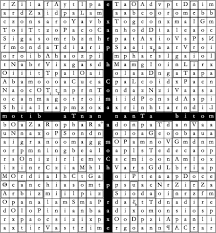

So you have a grid, it's got letters on the grid, each of the squares on the grid are made up of a combination of the elements. Certain spirits names can be created from letters on the grid in a certain pattern. And that gives you the name of an angel or an archangel or a an angel in a choir underneath a captain or whatever, right? But you end up with a spirit created of elements that you've put together consciously, and then you interact with it.
Spare - his contribution to the use of sigils, would be removing or rather freeing up the relationship between the sigil and let's say a number square or a tablet or something like that. At least in principle, because it has to come back in some other fashion.
You could take a sentence that you've written out. Or a word, right? So if you took the word ‘woman’ - and you can just take the geometric shapes of the word - and you end up with a pictorial glyph. And you can simplify it. So there's a creative attitude.
The rules are you're taking something that's conscious - the word ‘woman’ and you know what it means - and then you're making it into something that can bypass the consciousness and go into the subconscious. It's something that you can look at and it's not obvious what it means if you don't try and remember it. So it's obscuring it. There's an obscuration going on.
Here's a statement: This my wish to obtain the strength of a tiger. So he takes those words, makes them into geometric forms or shapes, joins them together until there's one combined sigil left. And he says:
Now by virtue of the sigil you are able to send your desire into the subconsciousness, which contains all strength. That having happened, it is the desires realisation by the manifestation of the knowledge or power necessary. - pg. 51, ibid.
It's that same principle, isn't it? There's some kind of conscious system or way of organising things and you link aspects of it together. And then what you're left with is some kind of image that can be divorced from the conscious meaning. It obscures it and becomes something like a spirit or something like that.
But he's doing it here with a sentence. I'll say more on that when I get to the alphabet of desire.
How do you get the sigil into the subconsciousness?
First, all consciousness except of the sigil has to be annulled. Do not confuse this with concentration. You simply conceive the sigil any moment you begin to think. - pg. 51, ibid.
Spare said something interesting in his later life. He decided he didn't like yoga at all, and he said, concentration was something he never even managed to do for even a minute. But maybe idiots were capable of it, something like that, right?
However, we have just seen, haven't we? That he describes a kasina practice. Anyway:
First, all consciousness except of the sigil has to be annulled. Do not confuse this with concentration. You simply conceive the sigil any moment you begin to think. - pg. 51, ibid.
Any moment you begin to think. So let's say you've got your sigil for strength of a tiger. This my wish to obtain the strength of a tiger. And you've got the image right? Whenever you start to think, whenever you start thinking, you catch yourself thinking, you visualise, right? You turn your attention to the sigil. Yep.
Do not confuse this with concentration. You simply conceive the sigil any moment you begin to think. Vacuity is obtained by exhausting the mind and body by some means or another. - pg. 51, ibid.
Now, he says about vacuity:
This is not the passivity of mediumism which opens the mind to what is called external influences or disembodied energy, usually having no better purpose than rap-tables. There are many means of attaining this state of vacuity: I mention the most simple, there is no need for crucifixion. Drugs are useless. Smoking and laziness the most difficult.
A personal or traditional means serves equally well, depending on temperament; choose the most pleasant; these should be held in favour, Mantras and Posture [so yogic practices], Women and Wine, Tennis, and the playing of Patience, or by walking and concentration on the sigil. - pg. 51, ibid.
‘But don't confuse this with concentration’.
So you want vacuity, it's using this principle of vacuity. What is that? And he's saying there are different ways of doing it, right? So mantras and postures. So maybe do some yoga practice. You do some mantras. You hold some postures. Or women and wine. Is that going to the pub? I don't know. Tennis, play Tennis . Go play tennis, right? Playing of patience. And then he says, or by walking and concentration on the sigil, et cetera, et cetera. But what that sounds like is: whenever you start to think, you have the sigil instead. So playing tennis - when you start to think, have the sigil instead. When you go walking - have the sigil instead.
Vacuity - here's something that's interesting:
None is necessary to him who has (even symbolically) for a moment by the “Neither-Neither” conquered the dual principle (Conception), his Ego is free from gravity. - pg. 51, ibid.
So what does that mean? It means you don't really need a means of entering vacuity if you've mastered his practice of the death posture.
Once you've done your kasina practice for a bit, the death posture itself is the opposite of being contracted and tense. And there's a certain state of mind, which is nothing really bothers you. Nothing's really bothering you, right? This is his vacuity that he's talking about.
Now, if you've managed to accomplish that, you don't need any special means. All you have to do is keep bringing your attention back to the sigil instead of thinking.
If the Sigil is made an obsession by continual apprehension, it's realisation may happen any moment, in the form of inspiration. This is done by reverting the mind to the Sigil when one is extremely worried - the time of exhaustion is the time of fulfilment. At the time of exhaustion or vacuity, retain only and visualise the Sigil form - eventually it becomes vague, then vanishes and success is assured. By the ego conceiving only the Sigil, and not being able to conceive anything from it [because it's been obscured, hasn't it?], all energy is focussed through it, the desire for identification carries it to the corresponding sub-conscious stratum, its destination. - pg. 51, ibid.
Because you don't know what it is, right? But by constantly bringing it up, the energy that you have will travel through it. The subconscious knows what it means and it will activate it.
The Alphabet of Desire
Now what you can do is then create what Spare called an alphabet of desire.
When he was older, he completely forgot what this is. When people asked him about it, he couldn't really say anymore. He'd sort of forgotten it. It sounds like his memory was appalling.
Anyway, so if you extend the idea of sigils - you can have your sigil for something specific: This my wish to have the strength of a tiger. But instead of making an individual sigil every time just from a sentence, you could build up an alphabet of desire. The alphabet of desire that's given in The Book of Pleasure makes no sense when you read it, because what it is an obscured version of the tree of life.
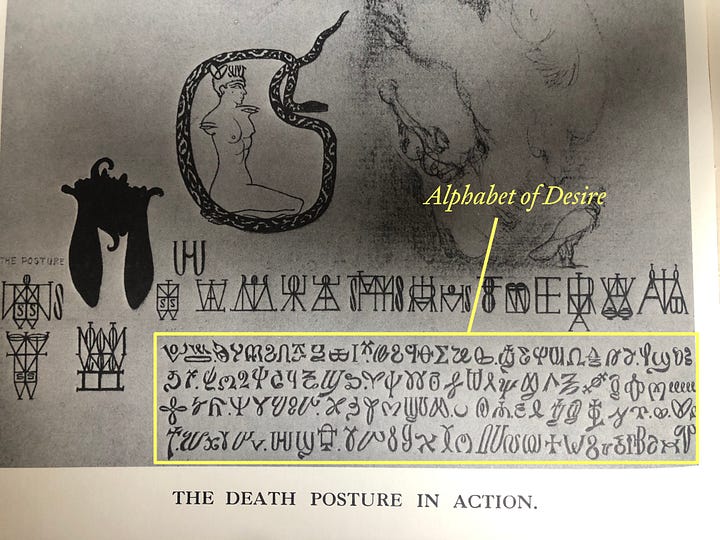
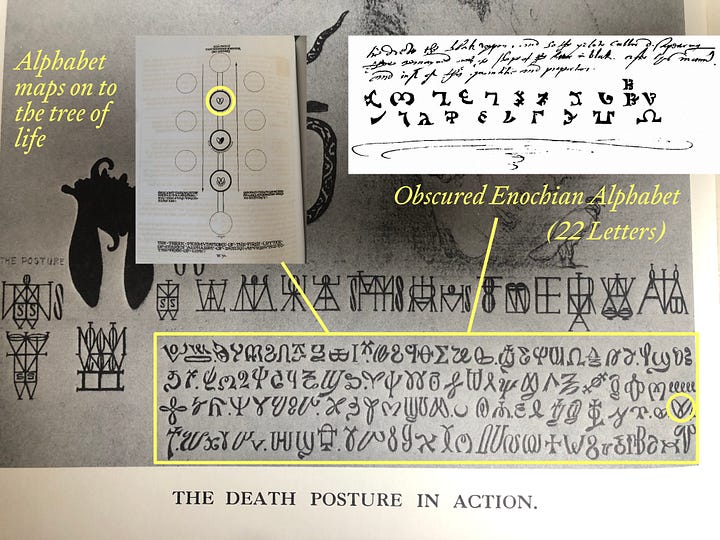
Spare’s alphabet of desire has 22 letters. And these are symbols, right? So you can make up your own symbols for different ideas. But the idea is that there's a principle at the top, and then everything unfolds from it. And then if you have a complete map or a cosmology, you could take different aspects and put them together to form a sentence.
Now, that sentence can be used to evoke a spirit, could be used in such a way to get a similar result to a specific sigil, but we're back to the idea again of the traditional magical sigil, where you have something like the tree of life or a astrological view of the world, or a qabalistic view of the world, or a map of the world. You take the elements that you want to put together to form a spirit or something like that. Your interaction that you have with it is such that you've removed it from the conscious order and structure of things to be a thing in and of itself.
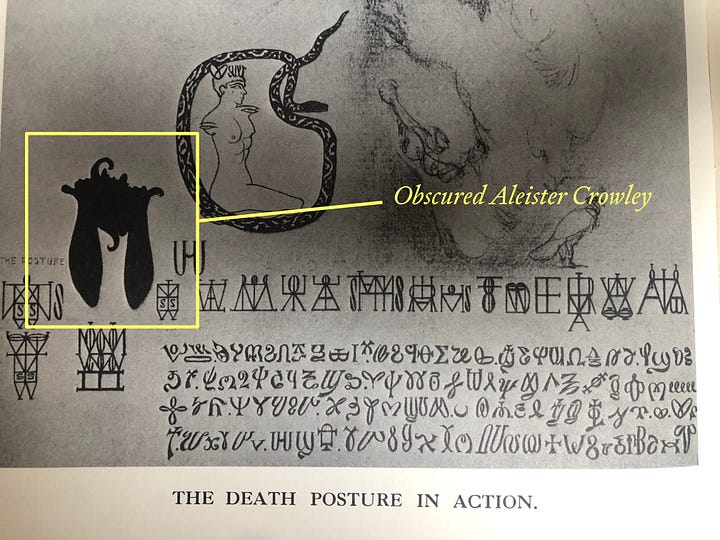
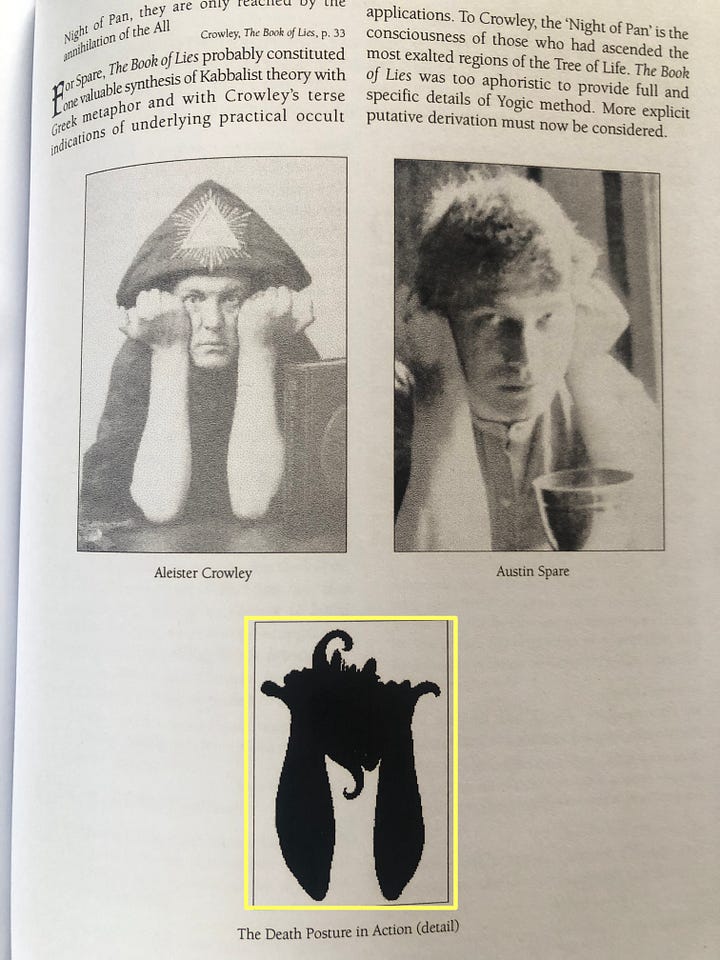
So there's a movement from the conscious order and structure of things, and it becomes obscured.
Spare’s Creative Lies
Now, Austin Osman Spare, not only was his work of this nature, you could see it in his artwork.
He would draw from his models, but then he would intentionally obscure the reference. And that's something that he repeated throughout his artistic career by various different means. Some people considered him the equivalent of a founder of surrealism, but like the English version.
He did it in his own life. He had all these wild stories about magical results that he had from using his sigils. Evoking demons. Something that looked like an owl that terrorised people. One person, he killed himself, another one went mad, or something like that, from seeing him do this magic.
If you read his letters to Kenneth Grant, there's lots of what can only be described as silly things. I don't know why he thinks this was a story to share. But, he used a sigil to make his penis grow so big he couldn't find a prostitute who could accommodate it.
Whatever. Okay, whatever. So these are made up stories. When he was a youth, he knew a witch called Mrs. Patterson. She initiated him and taught him ancient witchcraft and stuff, and he would go to Witch's Sabbaths and there's like a creative lying or a myth building that's going on, a taking of his ordinary life, removing it from its conscious nature to something mythical. Maybe we can put it that way.
Spare’s mythologising of himself, it was tied up with this idea of being taught witchcraft and being part of an ancient lineage of witchcraft. And that his methods were really not only part of an ancient and historic magical tradition, but even went beyond that to a cult on the astral plane.
Now again, we start to see some of Spare’s obscurantism merging with Kenneth Grant's myth-making. It even got to the point where Kenneth Grant would even title some of Spare’s paintings for him, and Spare was okay with that.
Kenneth Grant, he's of a similar ilk, right? He was a creative liar. And he couldn't help going off into fantasy. Grant reproduced the letter where Crowley wrote this to him.
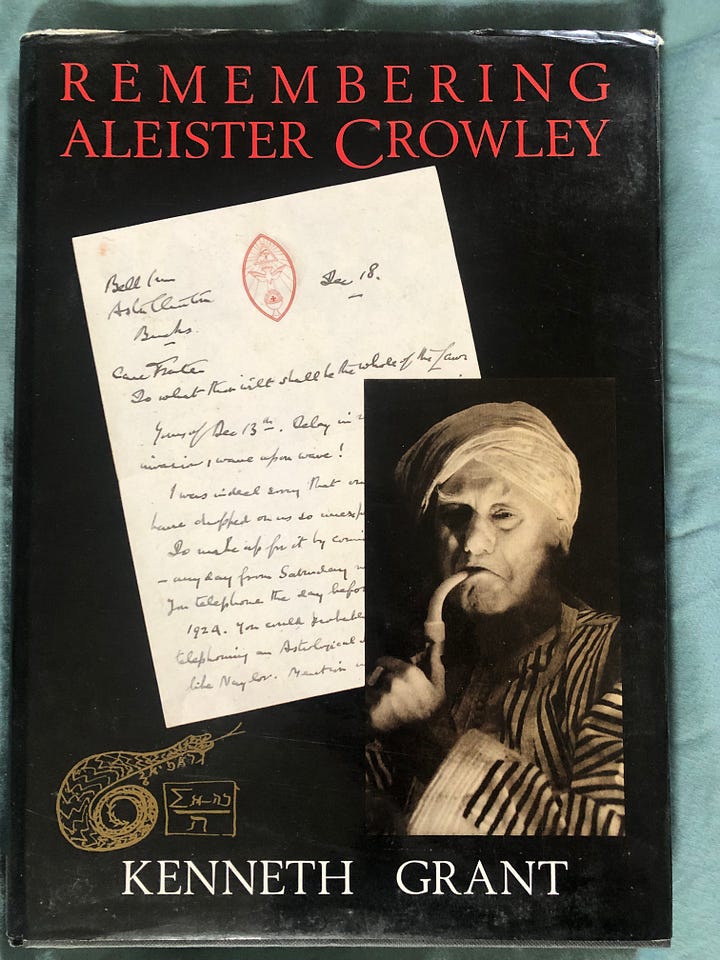
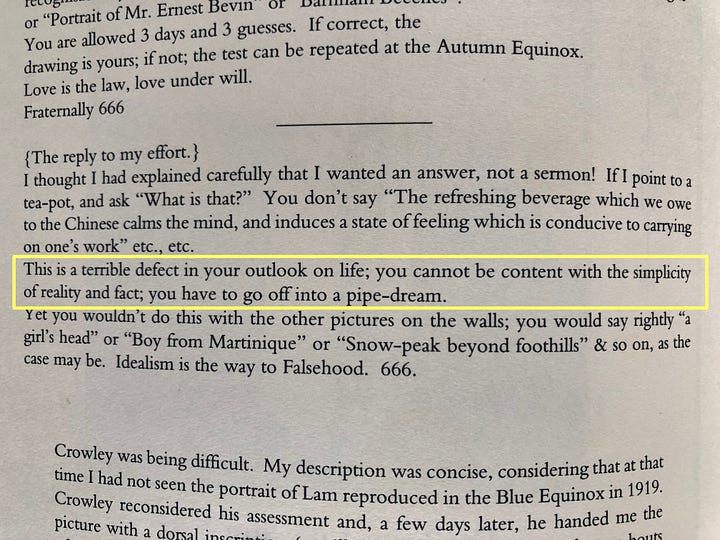
Crowley said to him when he was a young man, when Grant was 20, you have this habit of reality isn't enough for you. You have to just go off into flights of fancy, into fantasy.
It fits with Spare’s trajectory, part of that mythologising. It's like the young prodigy, the artistic prodigy who was celebrated, right? But he didn't live with the intelligentsia or the bourgeoisie or whatever, he preferred to live in the working class neighborhoods. That's cultivated, that's a cultivated thing.
It's like taking the fact that he was a great artist and then obscuring it. So you can see this movement over and over.
The Symbol of the Witch
Now there's a traditional understanding of the witch. I'll give it in the way Aleister Crowley talked about it in The Book of Lies.
So he talked about the black sorcerer, the evil sorcerer, and the evil sorcerer whose sole intent is self gain, right? The manipulation of others, the accumulation of magical power and so on. If you follow that seriously - with determination - eventually you'll travel beyond black magic, and you find yourself eventually on the path of the wise.
What did he mean by that? He meant you can do your magic with your demons and your angels and so on to make things happen. But then you will want power beyond that. So what's the power beyond that? It's the next thing up. In the hierarchy, in the magical hierarchy. If you keep doing that, eventually you're going to end up vertical, aimed up vertically. Eventually you're going to be aiming at the highest principle, however you define it.
Suddenly you're on the path of the wise. So the point where you would switch from being a black sorcerer to a member of the great white brotherhood - something like that - in Crowley's system, would be once the holy guardian angel has taken the reins and is determining the direction you're going in.
A traditional symbol then, and you find this in lots of myths, the witch is like the black sorcerer, the evil witch that lives in the forest, that will curse you, and eat children and that kind of a thing.
The charge brought against witches in medieval times was very specific. And it was the idea that witches disrupted the natural order of generation, prevented people from having children, either did bad things to children, so the lineage ends, makes people infertile, curses them. Seduces the men and lead leads them astray. It's all about the end of generation.
Today, we think of the word nature, and we think of it as a big green thing out there. And we have to look after it or something like that. Back in the day, nature meant the creative order and structure of things. So if something was against nature or was unnatural, what it meant was it doesn't produce offspring. Like it doesn't participate in that natural process of creation, something like that, right?
And that's what the witches were charged with. The magical action that they perform actually is detrimental to what's creative, to creation, the process of generation.
These are all useful ways for understanding what it's like in the Bailey. What practical magic is like.
Just going back to the traditional idea of the witch and how that's different from the magician, these two different kinds of magic. One of them is concerned with illusion. Because it doesn't have any connection to creation itself, all it can do is move around appearances to give the illusion that change has happened. That something fundamental has changed, right? So it's the moving around of appearances, but ultimately at its heart, it's divorced from the order and structure of creation itself.
Actual magic is like the word or the word that conjures creation into being in the first place. Of course there are parallels here with gnostic myths. The reason you end up with the demiurge is because Sophia tries to create without the father. So it leads to a parody of creation or a creator. And then a sterile world. Or we might just say, being and then its shadow, it's opposite.
So we can see with Spare, there is the creation of the illusion of change through the manipulation of appearances. We use the sigil and a magical result will happen, and it'll be astonishing when it does happen. It blows your mind, it's crazy when it happens. ‘Oh my god, magic is real.’
But we haven't left the Bailey, we haven't left the domain of illusion or appearance.
This is a key principle. The illusion of change is the same thing as the actual physical event of having your magical result. So if we said, ‘magic actually works and it's real,’ this is what we're talking about, the moving around of appearances to create the illusion of change where there is none, and fundamentally in and of itself is uncreative.
Austin Osman Spare, he's the embodiment of this. This is what he does. The creative lying, the obscuration, the method of the sigil, the taking of all these traditional approaches, right? Making them obscure, mythologizing them taking his own career as an artist, mythologizing it, separating himself from it. It gives the appearance of change, or the illusion of change. So he is a nice place to start.
These are your instructions.
Kasina Practice
Kasina practice - at a comfortable distance in terms of your eyesight, place the candle. So you don't want it too far away that you're straining to look at it. You don't want it on the other side of the room. You also don't want it too close. You want it a nice distance from yourself.
Light the candle, look at the candle. You can blink if you need to blink. It doesn't matter how many times you blink, you look at the candle. When you feel like you've looked at it long enough such that there's an image on your retina, close your eyes and then just keep your focus on that image that's on your retina and just stay with it, just keep your attention with it.
And it will move about, it may even change. It might even invert in terms of colour and that kind of a thing. But when it's faded, just open your eyes and look at the candle again. 10 minutes maximum. You don't have to do it for too long, so you could do that as preparation.
Formulate a Statement of Intent
Then, think of something you would like to test out magically speaking. So maybe you want to experience the strength of a tiger. Whatever you want to test out, right?
Here's another one: atavistic resurgence. This is the idea that because the subconscious is the storehouse of everything, if you wanted to experience the karma of a cat, what it's like to be a cat, you can do that. Or a bird.
Let's say you're in your house and you know that your slippers are downstairs. Maybe you do a sigil to make someone bring those slippers up the stairs without having to ask them.
But the key thing here is that you do something to test it out. Now, if that happens to dovetail with something you also want to happen specifically that isn't just a test, then that's great as well. But the higher context is, does this do anything? Is this really a thing?
The Chaos Magic Approach
So I'll just say a little bit about chaos magic.
So Pete Carroll read Austin Osman Spare and Crowley, and he came up with this idea, this way of formulating practical magic with sigils.
You get something he would call gnosis - which is not gnosis in any way, shape, or form as traditionally understood - but some kind of state that you might be in.
The moment of orgasm or a deep meditative state, right? Or…I'm trying to think of something creative. Maybe you get a friend to surprise you and slap you across the face when you least expect it. Anyway, some kind of state that you'll be in - and when it's at the peak of the state, whatever the state is, you then visualise the sigil and then you do your best to forget about it.
Now you can see this isn't actually Spare’s instructions, but this was Pete Carroll's contribution or the Chaos Magic contribution.
Use the Sigil
So I would say this. Practising Kasina - if you do it a number of days in a row, and then you feel like you're cultivating a deep state - and so remember Spare described how something should arise where there's a feeling of immensity or something like that - take the chaos magic approach and focus on the sigil then, and then do your best to forget about it.
Or follow Spare’s specific instructions. Go for a walk, and whenever you catch yourself thinking, instead of thinking, replace it with the sigil. A nd keep doing it. And at any moment, inspiration might strike.
Making the Sigil
Here's my contribution in terms of making the sigil.
You can do the process of writing out a sentence, crossing out repeating letters - or you could cross out all vowels and just have a consonants left - and then you can arrange them into geometrical shape. Then you've got your sigil.
You could do all of that, or you could draw something and just decide that it means the same thing as the intent. Yep. Just decide it. ‘Oh, this means this.’
In my book, Advanced Magick for Beginners, it opens up the possibility that you don't simply need to make a squiggle on a piece of paper to do this.
You can also understand ritual action in the same way. Because what is ritual action, if not something like taking different elements from an understanding of a cosmology, putting them together in the way that you want them to be together, and in such a manner that you consciously separate them from it [obscuration]?
The way I described that in terms of ritual action is, you have a statement of intent - make sure there's a way for it to actually happen. If you want to win the lottery, you better buy a ticket. Make sure there's an available means of manifestation - the magical act, you have a statement of intent, you decide that's what the magical act means. So it's that simple. But we'll just stick with sigils.
First of all, consider the statement of intent. What is it that you want to happen? It'd be nice if it dovetails with something you actually want to happen, but unavoidably, you're doing this to see if it works.
Then you can do it in the traditional way if you want emit letters until you have some left over, arrange them so it looks like a sigil. Or you can just draw the sigil and decide it means the same thing as a statement of intent.
The simpler the sigil, the easier it will be for you to remember it and recall it when you need to do the magical act.
Then you can either cast the sigil, so to speak, whilst doing the kasina practice. So wait until you're at your deepest with the kasina practice and then bring up the sigil, focus on it, and then forget about it.
Or do it the way Spare talked about it. Whenever a thought arises, replace it with a sigil and just keep doing that until you get your result. And it helps if you do things like play tennis at the same time, et cetera and so forth.
Question about wording the intent
Regarding sigils, how do we formulate the intent? I was always worried of using ‘I wish’ instead of ‘I will’. Can they be formulated negatively e.g. ‘I will stop smoking’.
The example Spare gives in his book is, ‘I wish’. In Chaos Magic, there's a big emphasis on saying, ‘It is my will’.
I would say it depends on what you think the words mean. So if I'm saying, ‘it's my wish that I will have the strength of a tiger’, I'm saying that in a way that's the same as ‘it's my will that I'll have the strength of a tiger’.
There's another way I could say it though. ‘It's my wish that I had the strength of a tiger’, which is another way of saying, ‘I hope I get the strength of a tiger’, right?
You will get what you're ask for. So what is it that you're asking for? If you're hoping, if you're desiring for the outcome, that's the qualification of the fact you don't have it. And if that's your experience of the truth at that time, then that's what you get, more of the same.
Now in terms of formulating things negatively, ‘I will stop smoking’ is something that could actually happen as an event, isn't it?
‘I will not smoke’. That's getting more wooly.
‘I will not fall down a hole’. The problem with that now, as expressed as a negative, is how do you know that's actually happened? Because it's the continuity of your regular experience, isn't it? So effectively you've said nothing. So I wouldn't choose that. That would be a bad candidate.
Don't get too hung up on it though. The point is this. What is it that you want? Write out what you want. Do the sigil. See what happens.
Question about the point of doing this
It's almost back to where I started down this path, and most of those sigils ended up in mini-disasters. Not sure why we are doing this now.
For you to see the rearrangement of appearances to give the illusion of change, so that you understand from your own practical experience now, what it is that I'm talking about on the retreat.
There is nothing inherently wrong with moving around appearances to create the illusion of change.
Now, if most of your sigils ended up in mini-disasters, maybe there's a question around what it is that you're asking for.
Now, of course, if you do not wish to do this, then don't. It's not guaranteed that there will be anything that will happen. There is an extraordinary preponderance of dramas around this kind of stuff, which means there are plenty of people who try magical stuff and they get no result for various different reasons, right?
Let's say you do it and you fail, you see something there. Let's say you do it and you also get the result. You get to see something there.
All seekers are in the Magical Castle
This is why people need to understand practical magic.
Outside of any professed content of a tradition, every person going through the process of growth that we describe in Magia experiences practical magic in some way or another, usually in the worst possible way - as part of an existential drama often.
People do strange and curious things like indulging feelings that they've decided mean they're being guided to do things, esoterically speaking, like automatic drawing or something like this. Or that they're receiving messages or visions that are supposed to mean certain things, with no concern over the origin of any of these things and what their nature might be. And they're indulged!
Things might turn up, entities might turn up, and they just go along with them. Maybe it's because of the way that our culture is, but because it works it must mean that it's wise and good and divine, if it works. Or they encounter something that's spiritual, so it must be good. It must be good. So whatever it says, whatever it presents must be true, so I must follow it, right?
This is what we would call in the business, extraordinarily bad magical hygiene. People get into trouble and they do it all the time.
So there needs to be a familiarity - if I'm to honour my responsibility as a teacher - to make what you're encountering conscious so you can identify it and at least navigate it in a way that's least likely to lead to negative consequences.
So, the magical castle, you will be in that castle whether you want to be in there or not - if you're following this thread that leads into the tower.
We have the impression in the west that there are magical traditions and then there are meditation traditions. Meditation - you either concentrate or you're naming things, something like this, right? Or feeling loving kindness for all beings. It's got nothing to do with magic.
Except if you step out of the west where these traditions have been sterilised - they've been denuded of anything that might point to the miraculous nature of the world - if you go into the east, these traditions are full of magical practices. Why? Because it's inseparable.
In Zen Buddhism, they have rituals involving pentagrams. Soto Zen, the most minimalist zen tradition you can think of. Pentagrams. And of course, insight meditation is based on a tradition that has 36 different practices, including chakras, divination, all kinds of stuff.
So the magical castle is just another way framing - you could say creation itself or the process of creation - the conscious engagement with what it means to say yes to your inheritance. You can think of it in these terms.
Question about forgetting
My issue has always been forgetting and desiring. I seem to become obsessed with the outcome such that it doesn't happen. Any way to deal with this?
Exactly what spare describes. Instead of a thought, have the sigil. That's all you have to do.
In later life, Spare described variations of this. And sometimes he talked about vacuity or exhaustion in the same way of thinking about being frustrated by not having what you want. And it's then that you turn to the sigil.
But later on, he wasn't using sigils, he was using Egyptian deities that he'd drawn or painted or whatever.
What he would do is - so here was another practice - he’d have some kind of deity or something like that. Sometimes he’d use a Buddha, right? But you would write what it is that you want to happen, put it under the statue and then decide to give something up like smoking until you get the result.
Now, of course, if you do that kind of a thing, it's not a question of forgetting the desire, is it? Instead, it's like changing the obsession to its opposite.
The idea of forgetting about it isn't there in Spare.
The method that I'm talking about, that Spare used with a deity of some description, you have the intent that you want and then you give something up. It sounds like renunciation for a magical result, but the frustration’s there and it's channeled into the subconscious as a result of the act. It's not really the same thing as making yourself forget it. Is it?
Is Spare a cautionary tale?
Why are we talking about Spare? It's clear he was a mess by the end. So what's the purpose of starting with his instructions? Is it a cautionary tale? Can you pinpoint a moment when his path went astray?
One thing I would say is, I'm not saying Spare went astray or making any judgment about the nature of his life.
He embodied a particular mode of being, if we can put it that way. You see it in his artwork, you see it in his career. You see it in his magical methods. I'm mentioning him because he nicely encapsulates, especially with his witch mythology, a nice way of understanding practical magic.
So I could have talked about other things with the practical magic, but I thought Spare was a nice touch point given that he's part of recent modern, magical tradition. And many occultists are very taken with them.
You could say, ‘oh look, he's taken all of these clear instructions and made them obscure’. You could say that, right? But it's very clear what his intent is, what he thinks is important. He talks about the Self with a capital S and he talks about a way of relating to it, right? And you might say, in some senses, it's an expression of the context of the time that he found himself in, that kind of a thing. So I don't mind that.
But the difference I have with how I feel about Kenneth Grant is that his creative lying leads people in the opposite direction to the truth, the great work, at the expense of someone else's work, usually Crowley’s work. With Crowley, he took stuff from Crowley and made up weird myths that obscures Crowley's work. So then I have a problem with that.
Spare ends up where he wanted to end up. That's what I think. He ended up obscure. He made himself obscure, nothing comes out of his work like a lineage or anything like that. If you asked who or what does he serve? It only goes so far, doesn't it?
I know that in Alan Moore's comic Promethea, where he lays out his understanding of the Qabalah, he places Spare in Da’ath or the illusory sphere on the tree of life, the implication being that Spare is like a black brother. So he is gone so far and then he stays there. Crowley did say that about him at a certain point.
But anyway, in terms of practical method and then the esoteric understanding of his entire life and what he embodied and what he played out, and keeping with the theme of the retreat, I thought he was a nice individual to look at in that regard.
It's also a nice touch point for understanding the development of practical magic in the west, where we find ourself at the moment.
In Part 2: The Motte
And the next time we talk, I'll spell out the rest of the understanding of the magical castle, right? And then how that relates to practical ritual.
And then at the end, there'll be a complete system of practical magic. But you should have an orientation for understanding magical experiences that are an inseparable part of following this thread, regardless of what tradition you're in.
And you're understanding next time will hopefully be informed by your experiment with the sigil. So you understand what I mean when I say the illusion of change as a result of moving appearances around.




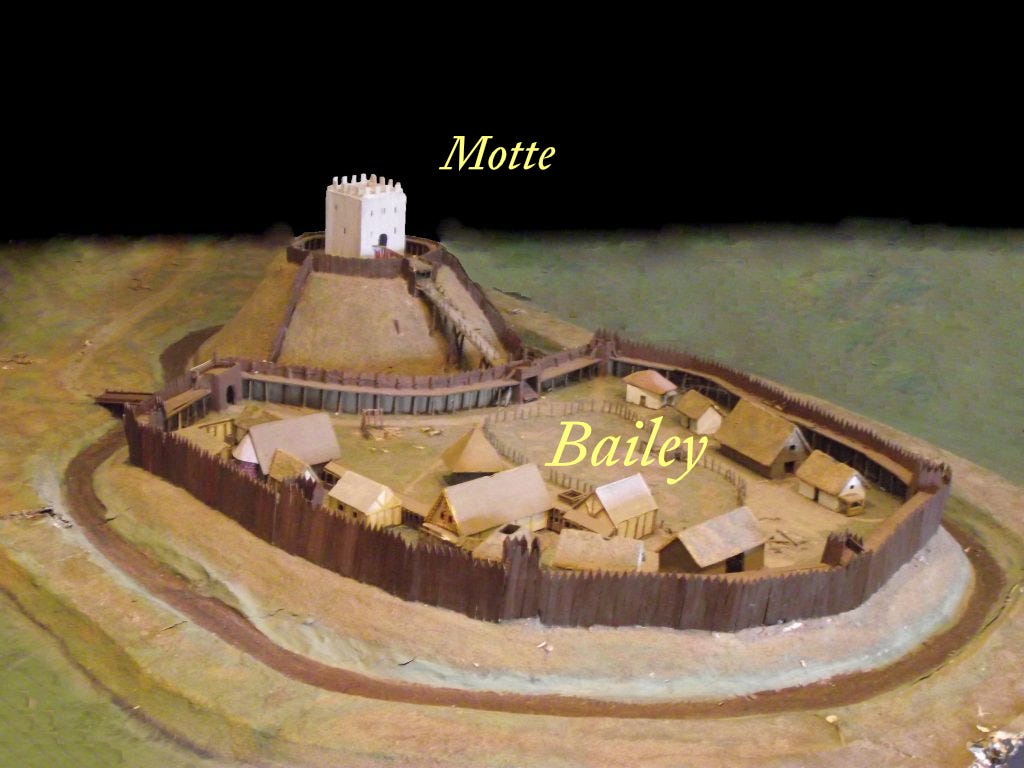
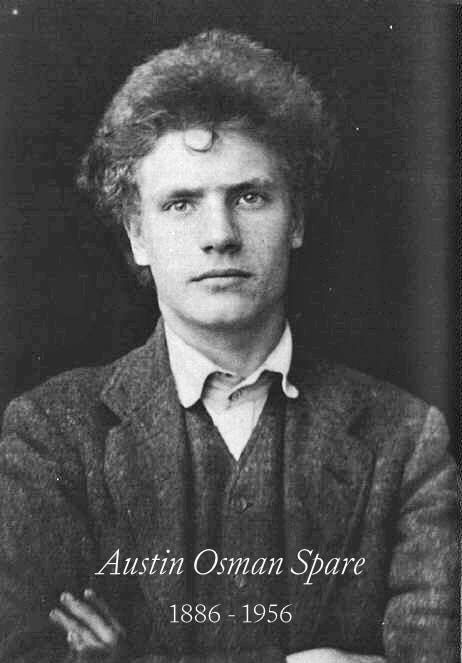

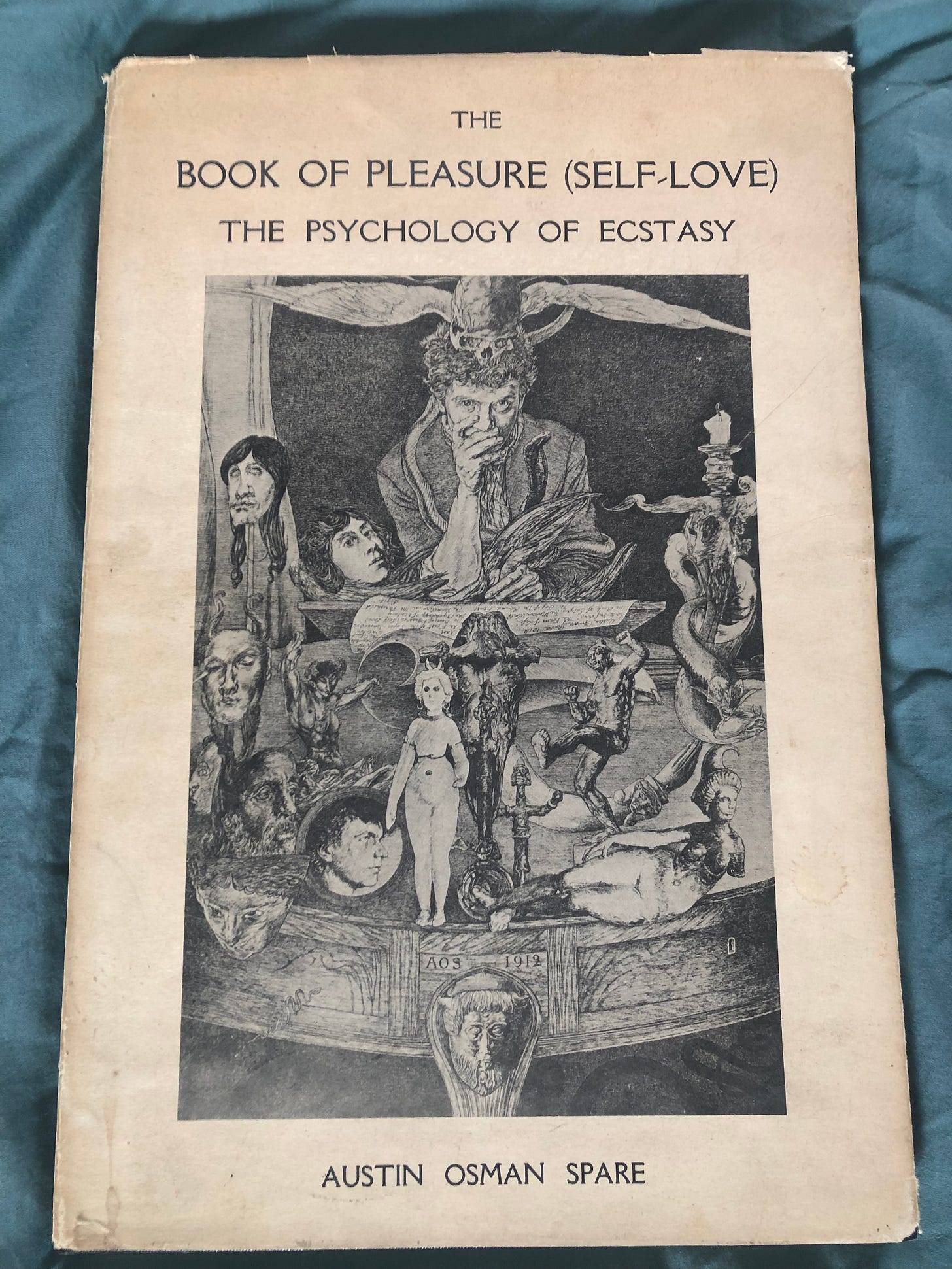

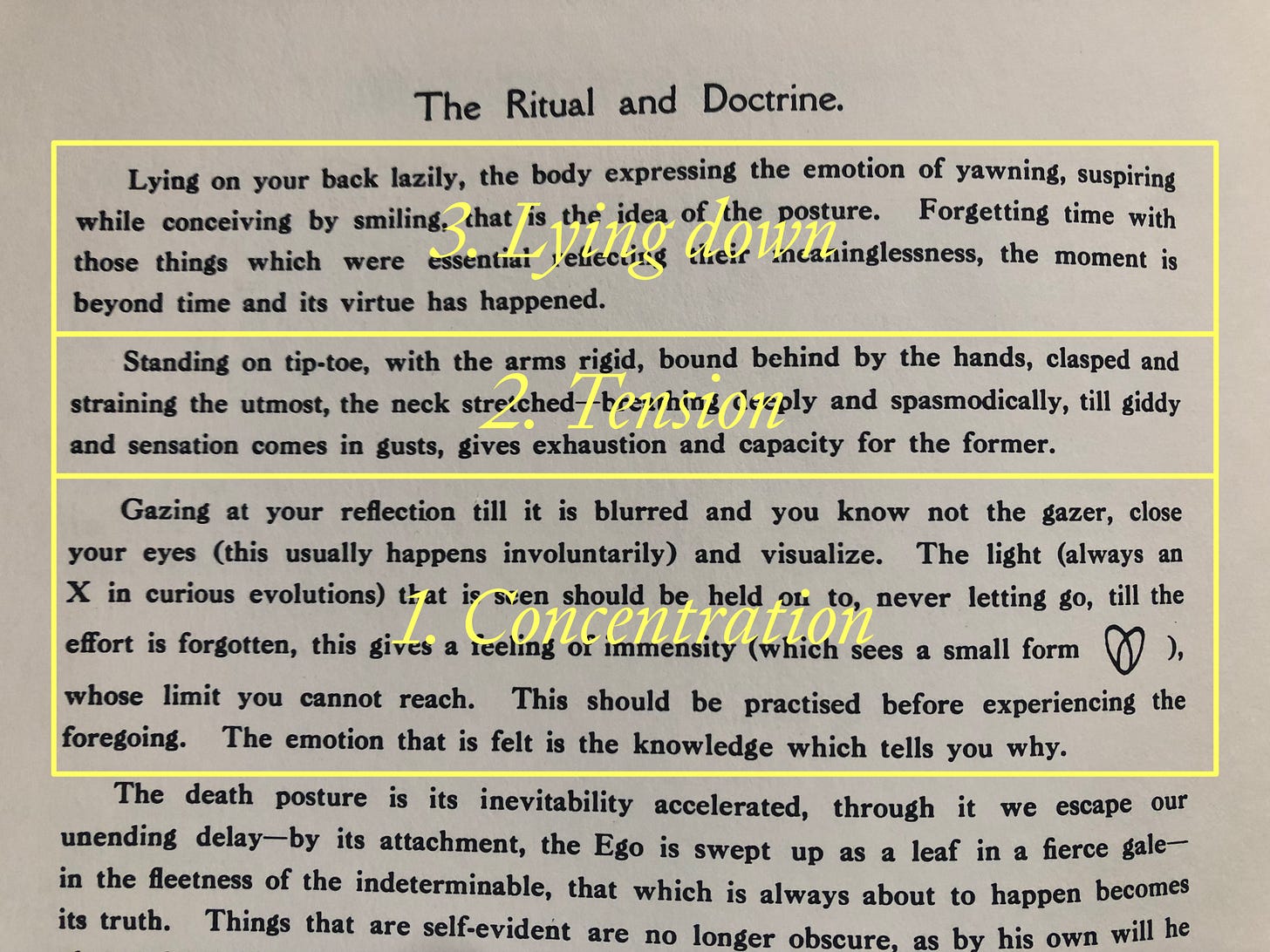
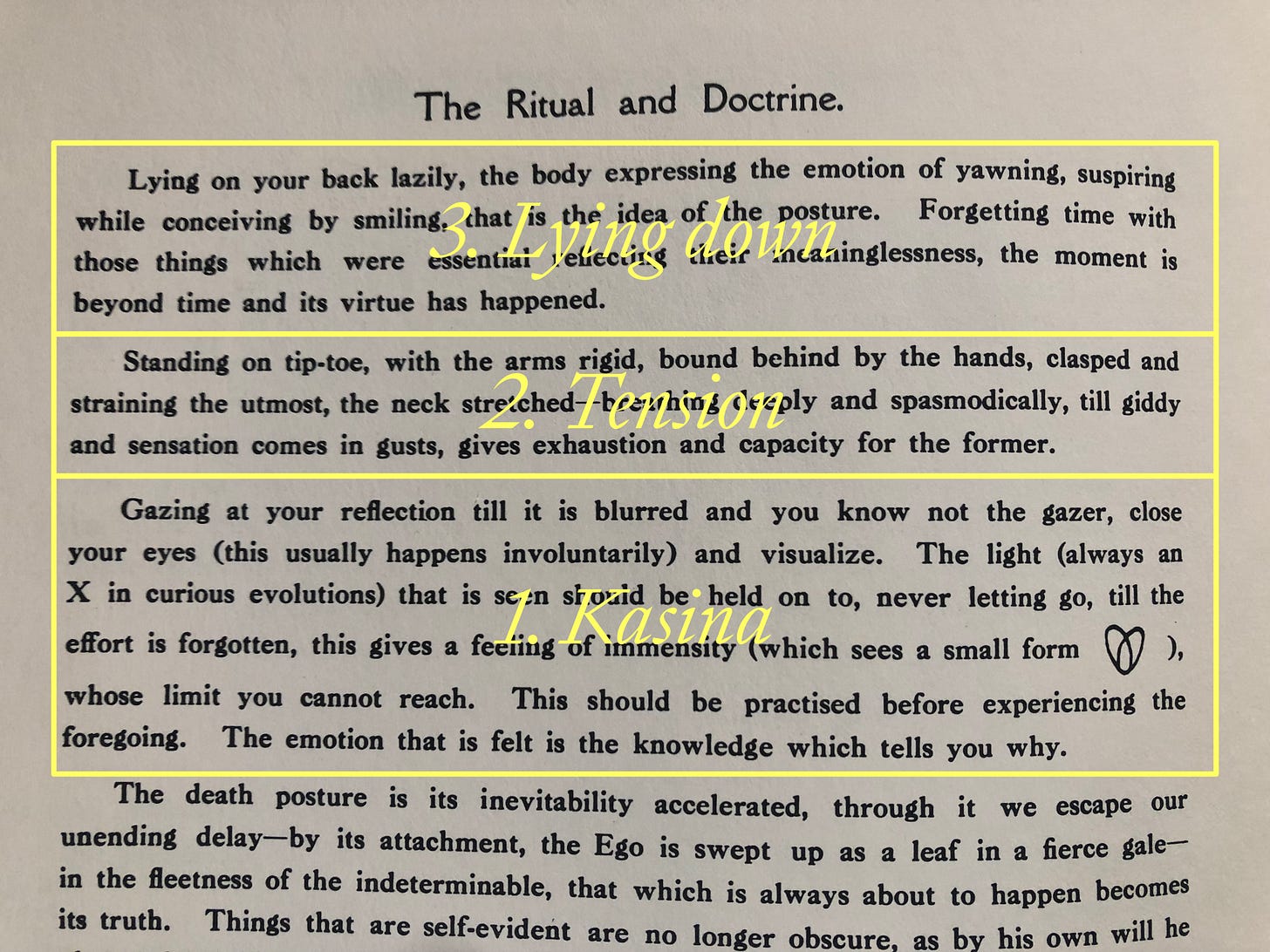
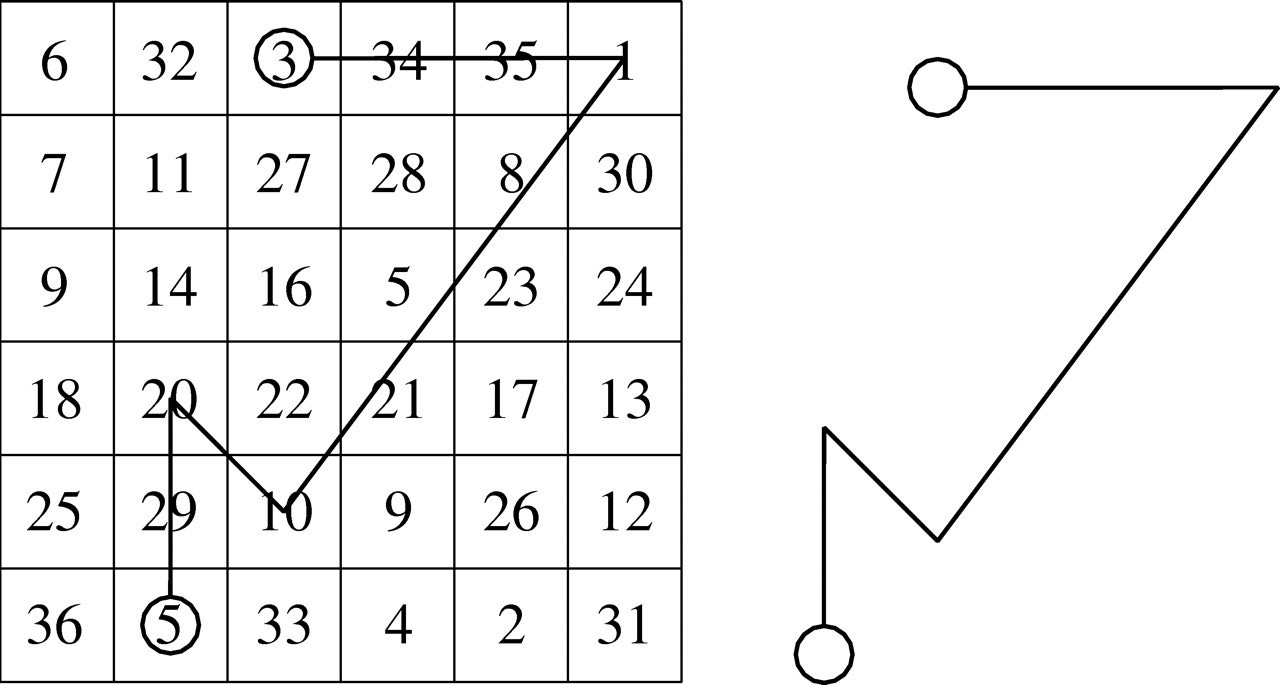
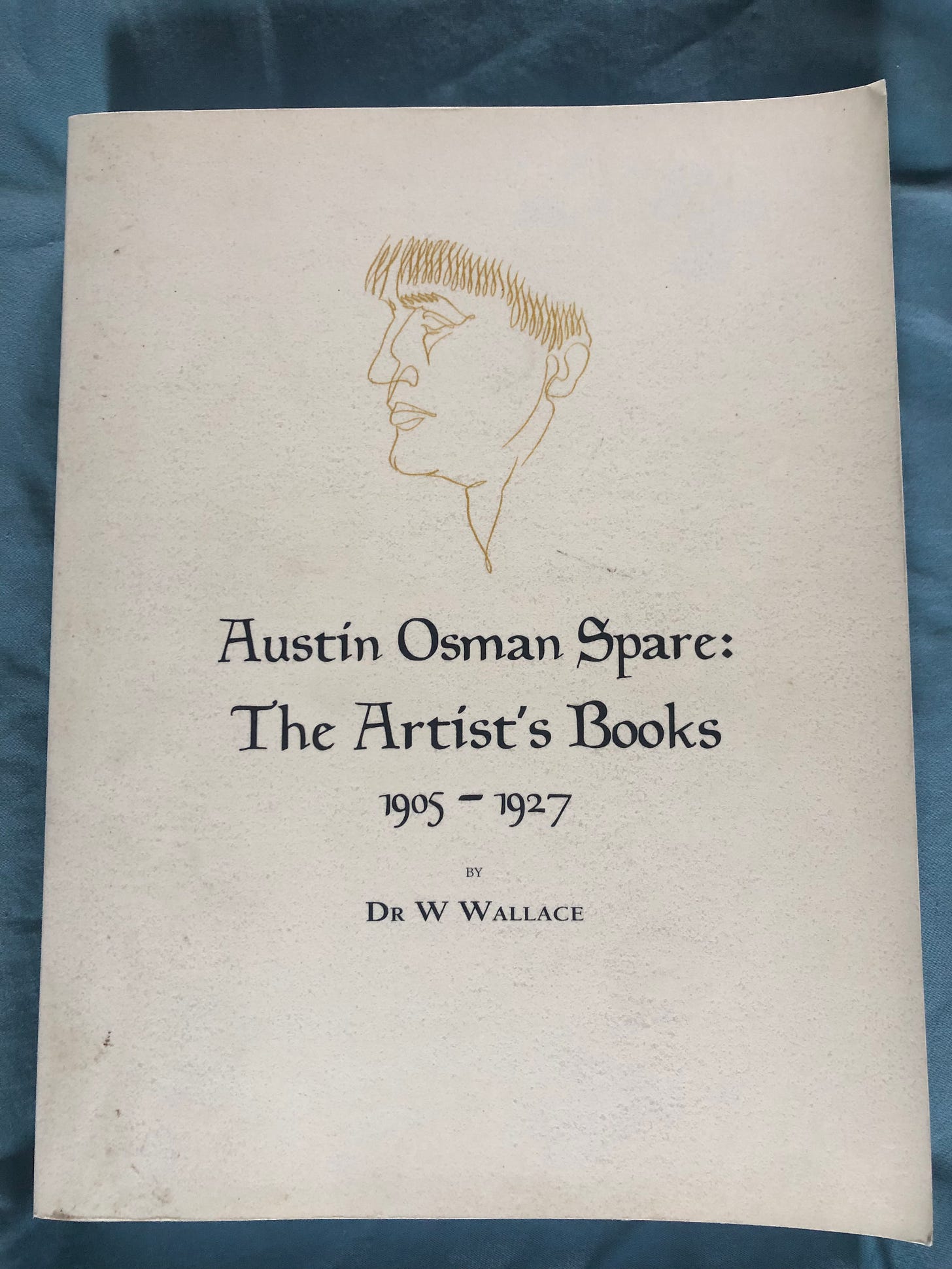
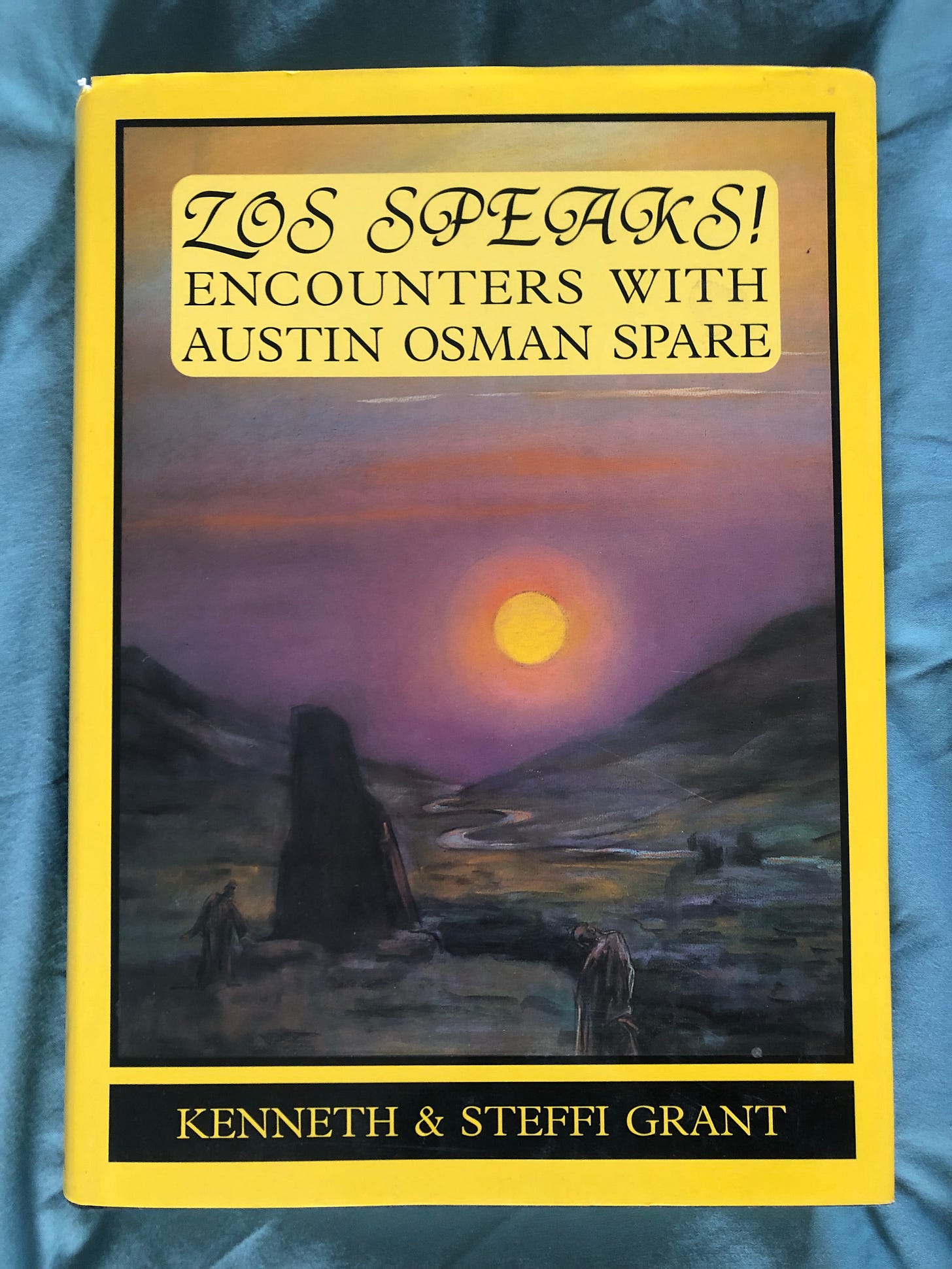
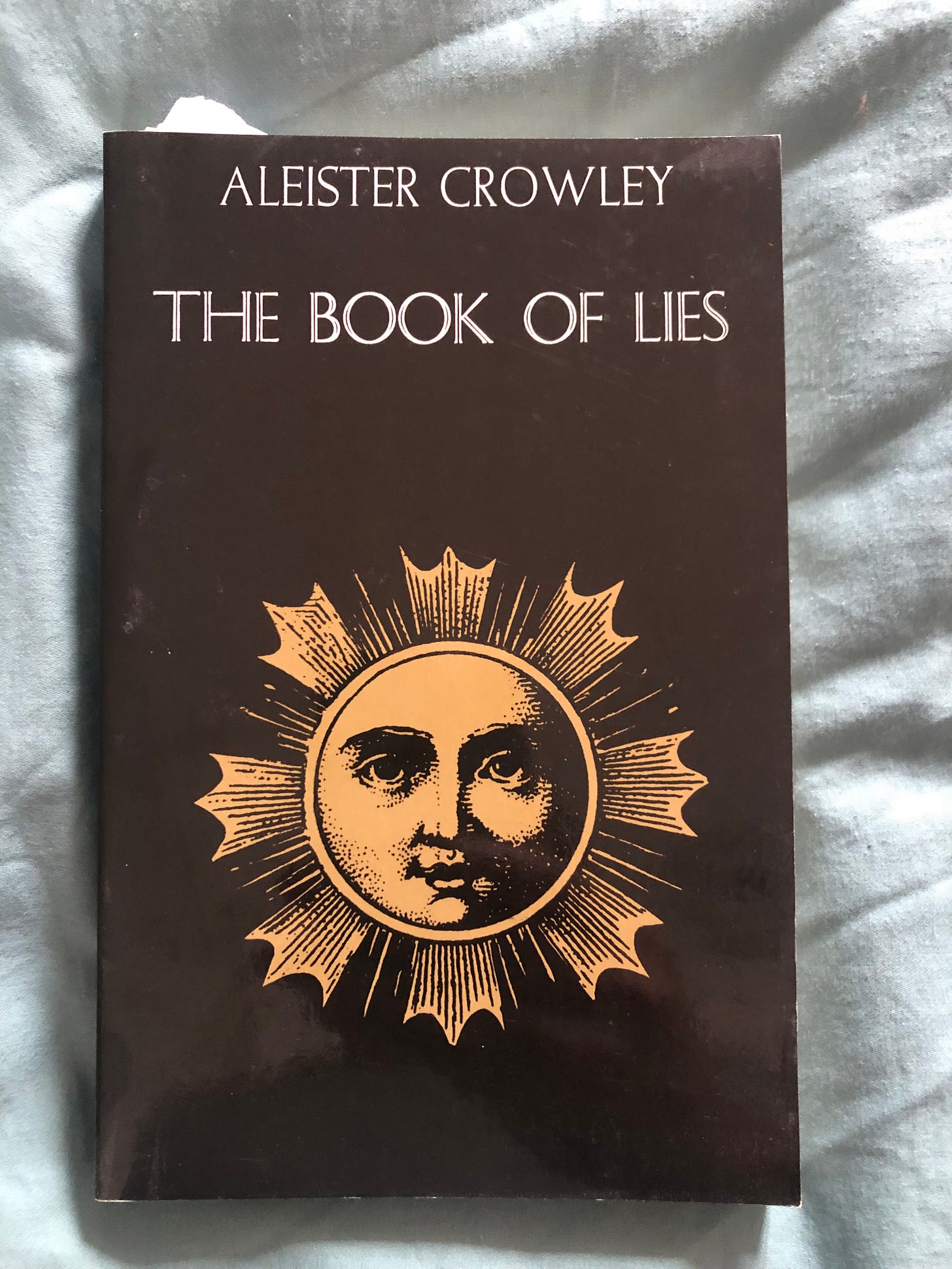
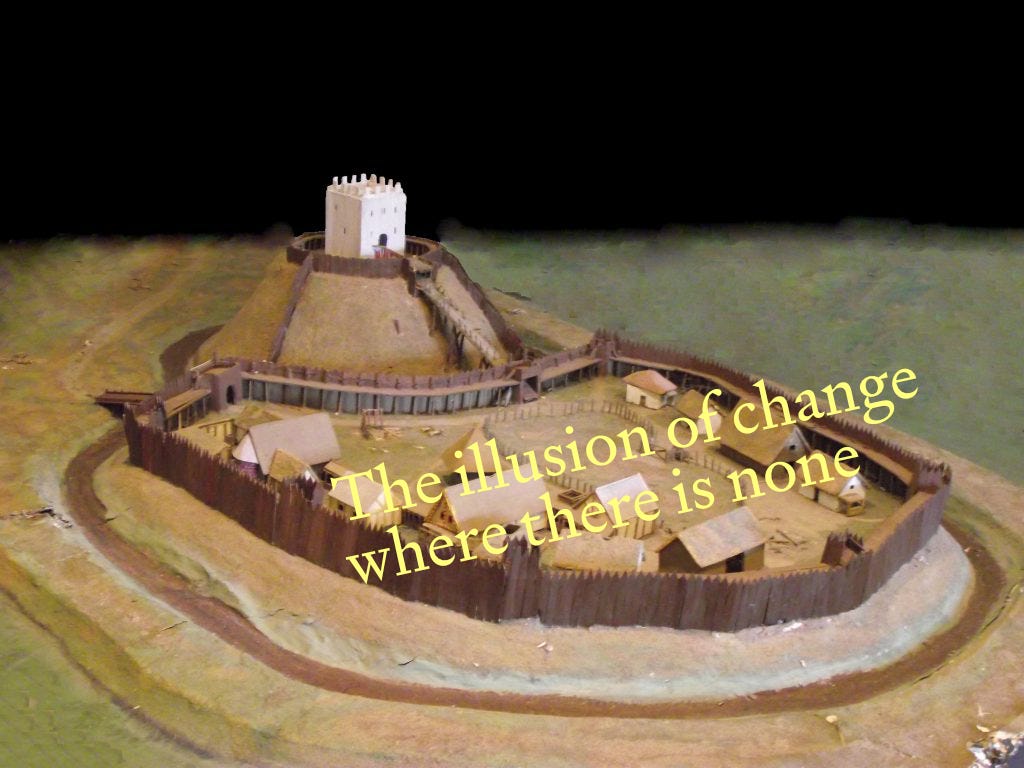
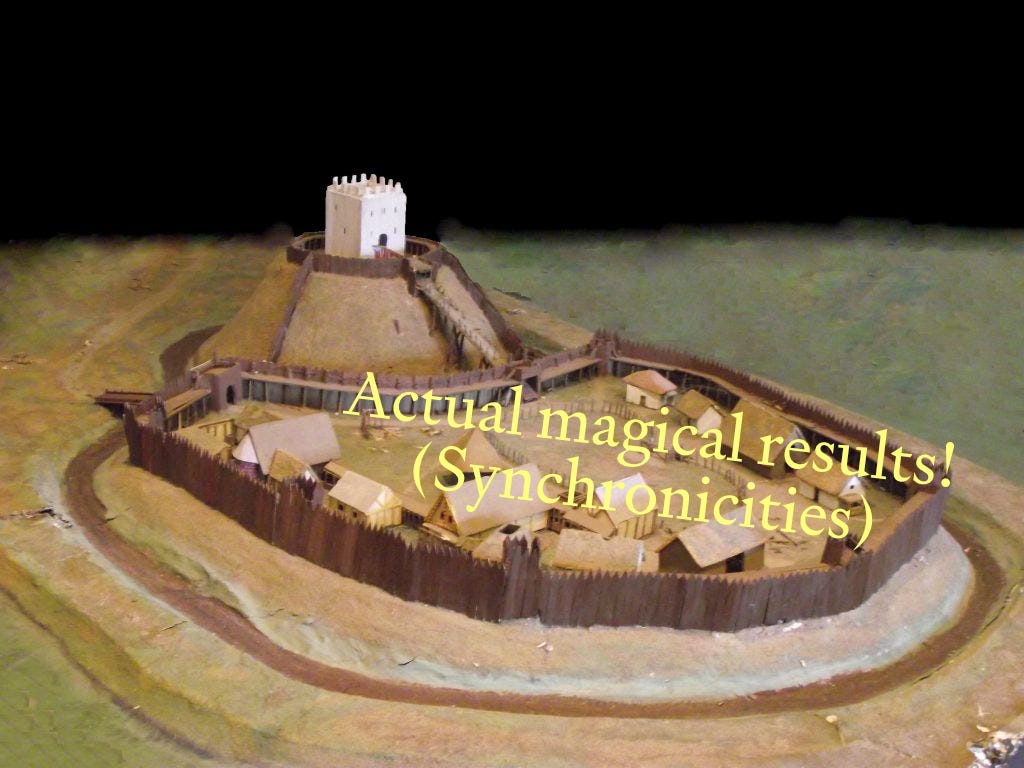
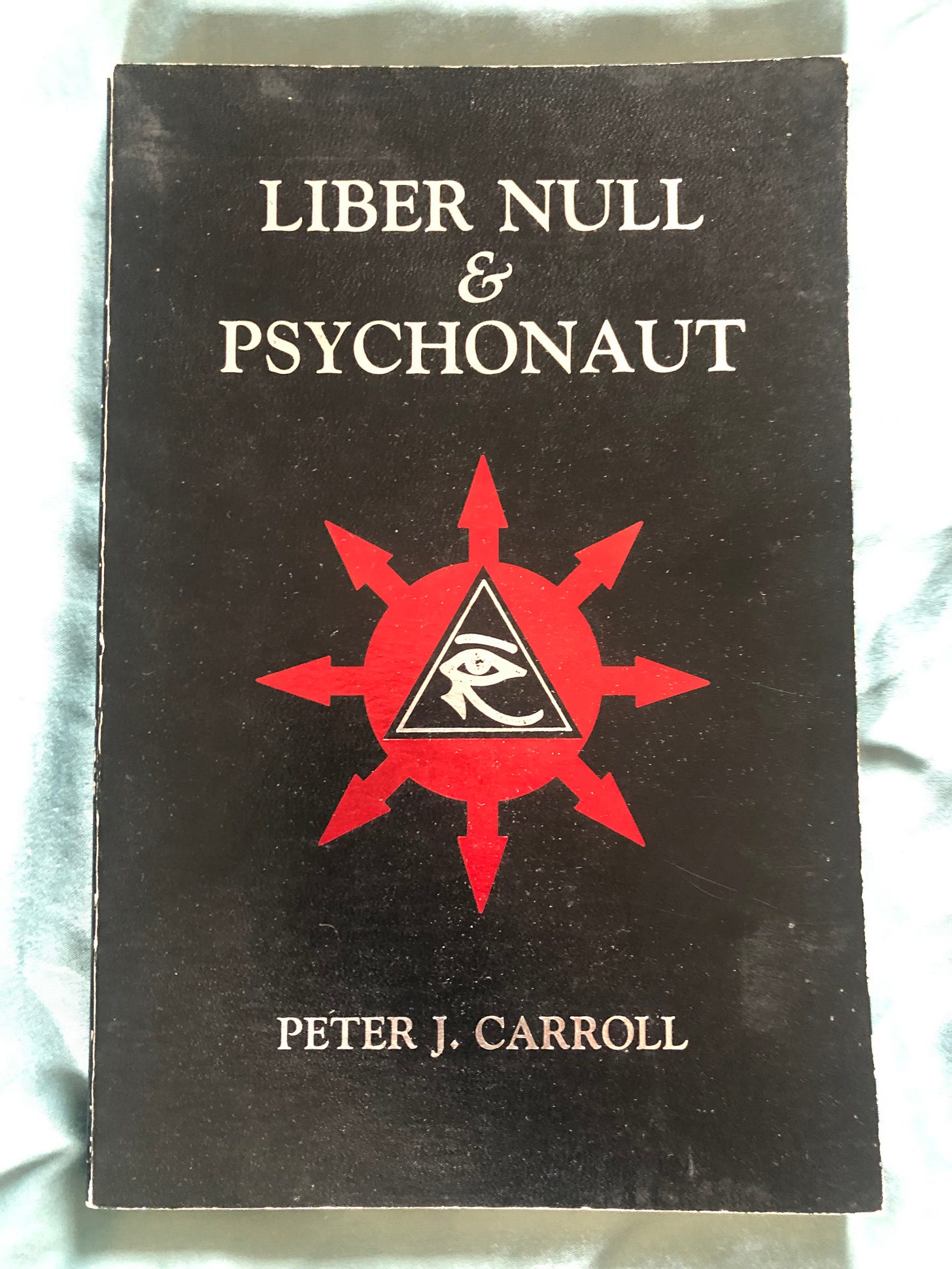
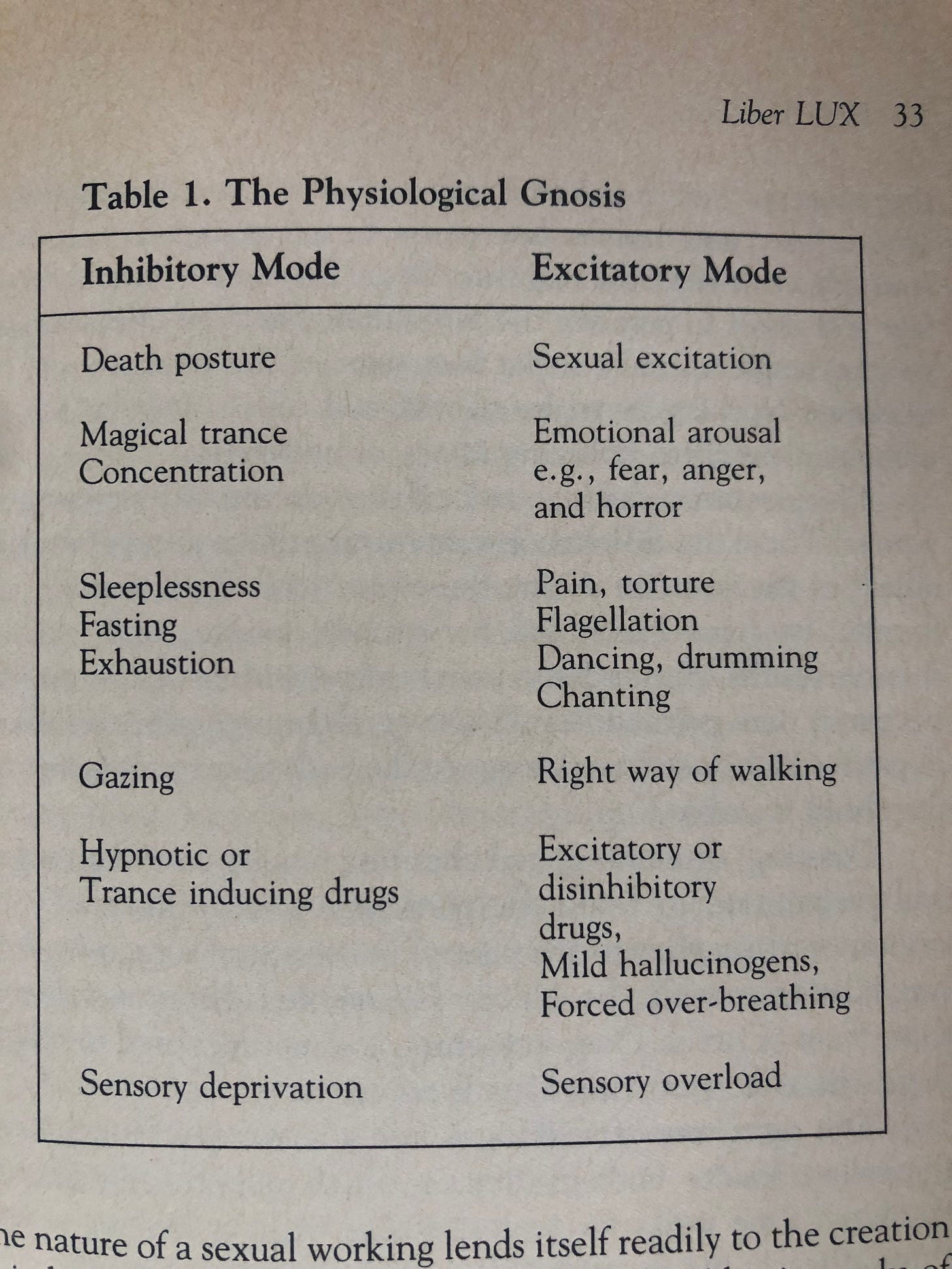

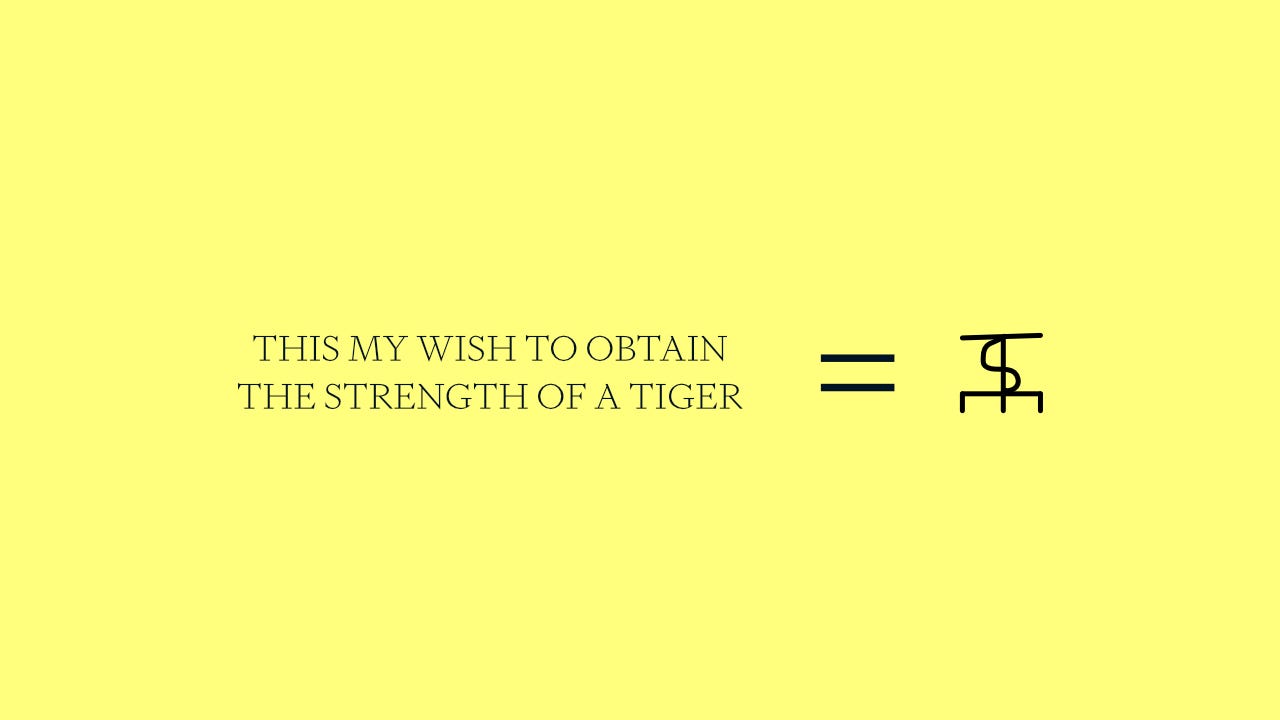

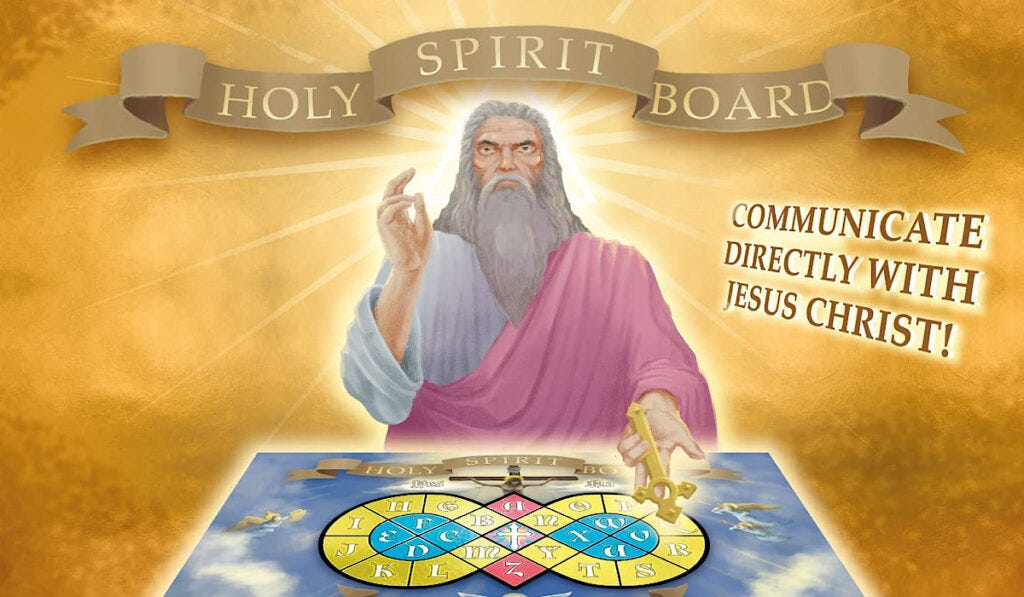
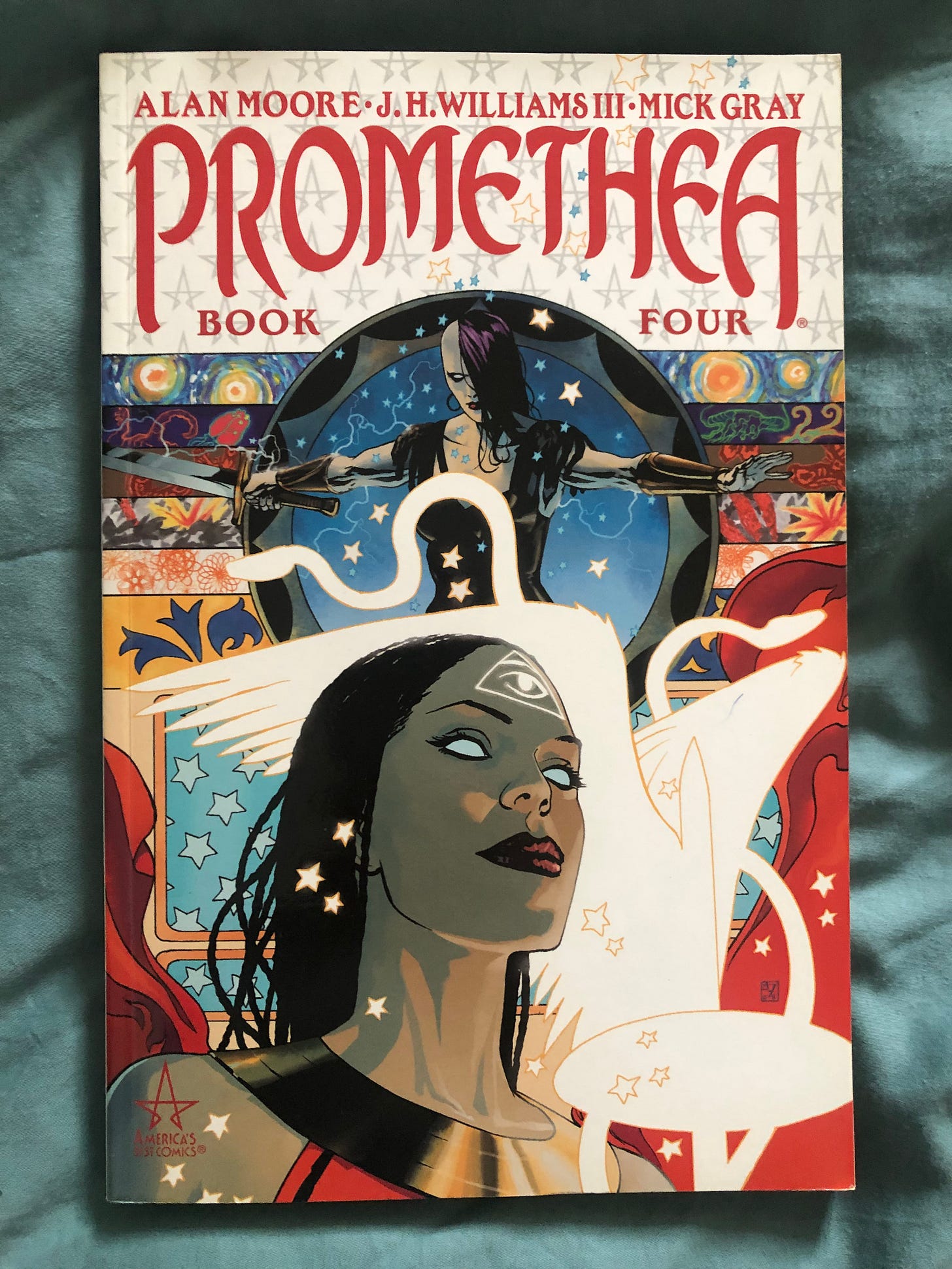

Share this post